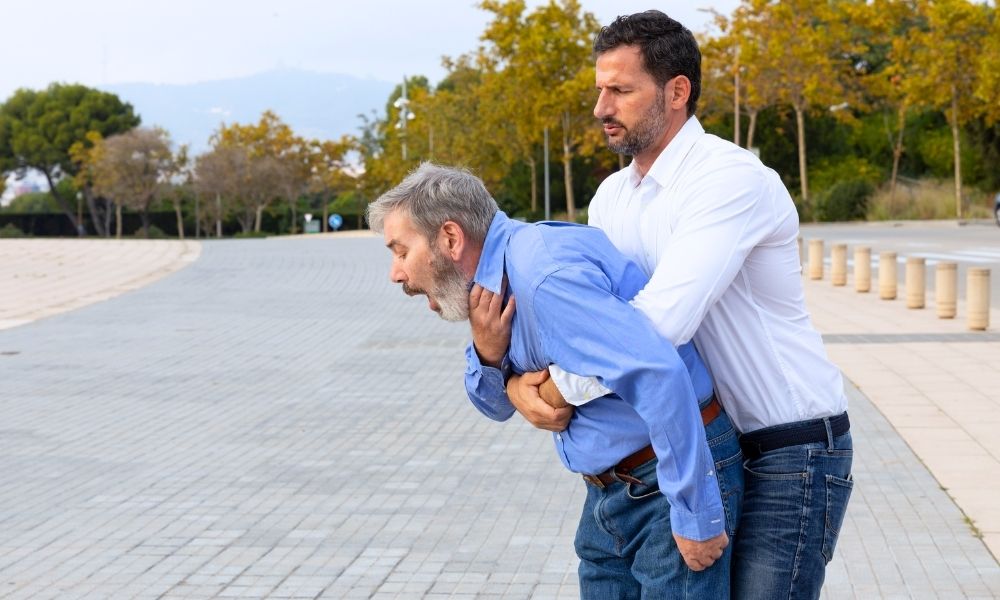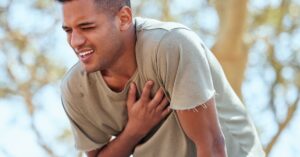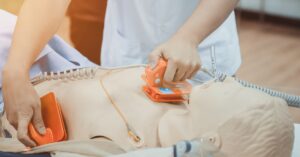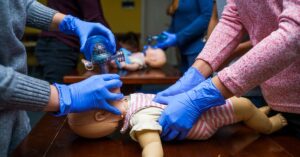Imagine you are in a public place, be it on a nature walk, in a restaurant, or at a shop. As you go about enjoying your day, you notice some sudden commotion. Perhaps a friend, family member, or stranger has collapsed to the ground. What do you do in this situation, or rather, what do you think you’d do?
Unless you have found yourself in an emergency situation like this before, you likely don’t know how your body will react. Your fight-or-flight instinct will kick in, and you never know which it’s going to be. However, these responses are not set in stone. If that were the case, we wouldn’t have nearly as many emergency responders and healthcare providers in the world. That’s because you can train yourself with the knowledge of what to do in a variety of emergency situations. With that in mind, you’ll likely want to find out the top important lifesaving skills everyone can and should know.
Performing Abdominal Thrusts
It may seem surprising, but choking is one of the main causes of accidental death. Thousands of people die every day from choking, which is often a preventable death. That’s why it’s so useful to learn how to perform abdominal thrusts, as these can save a victim in distress.
Abdominal thrusts are incredible lifesaving maneuvers that work by administering a brute thrust to a victim’s upper abdominal area. This will help dislodge a foreign item, clearing the victim’s airway and saving their life.
Using an Automated External Defibrillator
If you are a fan of medical TV shows, you likely see them utilize a defibrillator to bring a patient back to life or reestablish a normal heart rhythm. While you’ve probably watched this process on TV, you might not have known that you are capable of doing the same thing.
You can receive training on how to use an automated external defibrillator. AEDs are widely available in many public places if a victim of cardiac arrest or arrhythmias needs one. Therefore, knowing how to use one can be a lifesaving skill.
Identifying a Heart Attack
In our Basic Life Support class, you will learn how to notice the signs of someone experiencing cardiac arrest. There are a wide variety of symptoms, but the person might experience chest pains that spread to their back, jaw, arms, and stomach. If you recognize these signs, you should call emergency responders immediately and begin administering CPR.
Administering Cardiopulmonary Resuscitation
Learning how to administer CPR is likely one of the most important and lifesaving skills everyone can and should learn. CPR teaches you how to administer chest compressions to a victim to help maintain blood flow. The great thing about CPR is that anyone can learn this skill with a course.
Adult CPR
It’s important to know that there are different CPR techniques you can perform, which will depend on the CPR recipient’s age. For the most part, when you sign up for your course, you will learn about the different ways to administer adult CPR. For example, you can learn how to administer chest compressions, mouth-to-mouth, and two-rescuer CPR, which are just a few examples.
Infant and Child CPR
In addition to learning how to administer adult CPR, you can also learn how to administer infant and child CPR, which differs significantly from adult CPR. Children and infants are more fragile than adults, as they are still growing, requiring gentler yet effective movements. If you want to learn infant and child CPR, you must sign up for an additional class.
Controlling Bleeding
Many of us tend to think that we know how to treat a wound. We can just slap a Band-Aid on it, and it’ll be fine, right? However, many types of wounds can occur at any time. That variety requires different treatments for each wound.
For open wounds that are bleeding quite a bit, one of the most popular techniques is applying pressure to prevent bleed-out and promote coagulation. For more severe bleeding, you should learn how to assemble a tourniquet to inhibit blood flow to an area.
Treating Insect and Snake Bites
It’s fun to head into nature, but doing so can put us in danger, as insects and snakes traverse the area. While it’s more likely that you will receive a bite from a harmless animal like a mosquito, it’s still useful to have the knowledge of how to treat rarer occurrences. However, the simple fact of the matter is that anything can happen in nature, so it’s useful to have this training so you can help anyone in distress.
The first thing you’ll want to do is contact emergency responders and wash the bite. It’s best to wash it with clean water and soap and cover the wound with a cold and clean compress. Then, try to keep the bite at a lower level than your heart, as this will help slow any venom from spreading throughout your bloodstream. Finally, it’s best to remain calm and still, as this also helps prevent the venom from spreading.
Treating Major Burns
The idea of a serious burn can be terrifying. The first thing you should do is contact emergency services. Thankfully, in the meantime, there are methods you can use to treat major burns as you wait for the first responders to arrive. If you take our BLS course, you will learn treatment methods like cooling the burn with cold water, applying petroleum ointment, and ensuring the burn does not receive sun contact.
Administering Basic First Aid
We can’t avoid being vulnerable to accidents and can injure ourselves at any time. That’s why it’s essential to learn all about administering basic first aid. When you take our BLS course, you will learn a wide variety of things, such as treating scratches and burns, applying bandages and dressings, removing debris from wounds, and more. Though these skills in and of themselves probably won’t save a life, they could prevent risky situations from becoming life-threatening ones.
Treating Hypothermia
Hypothermia happens if your body temperature becomes too low, resulting in shivering, incoherence, and elevated blood pressure, among other symptoms. If you notice the signs of hypothermia, you’ll want to remove the person from the cold environment, remove any wet clothing, and dress them in dry clothing and blankets.
Administering an EpiPen
Many of us are allergic to foods and insects, which is why it’s so useful to know how to administer an EpiPen. Thankfully, it’s quite simple, as there are only four basic steps to follow. First, you’ll want to hold the pen with your dominant hand and remove the safety cap. Then, position the tip toward the thigh at a 90-degree angle. Then, you’ll need to jab the pen into the person’s thigh. Finally, call emergency services and wait for them to arrive.
Are you looking to achieve your AHA certification? At CPR123, we have CPR, AED, and first aid courses that non-healthcare providers can easily attain. We pride ourselves on providing the highest-quality training so you can finish your course with confidence, knowing you have received the most expansive and in-depth training available.








